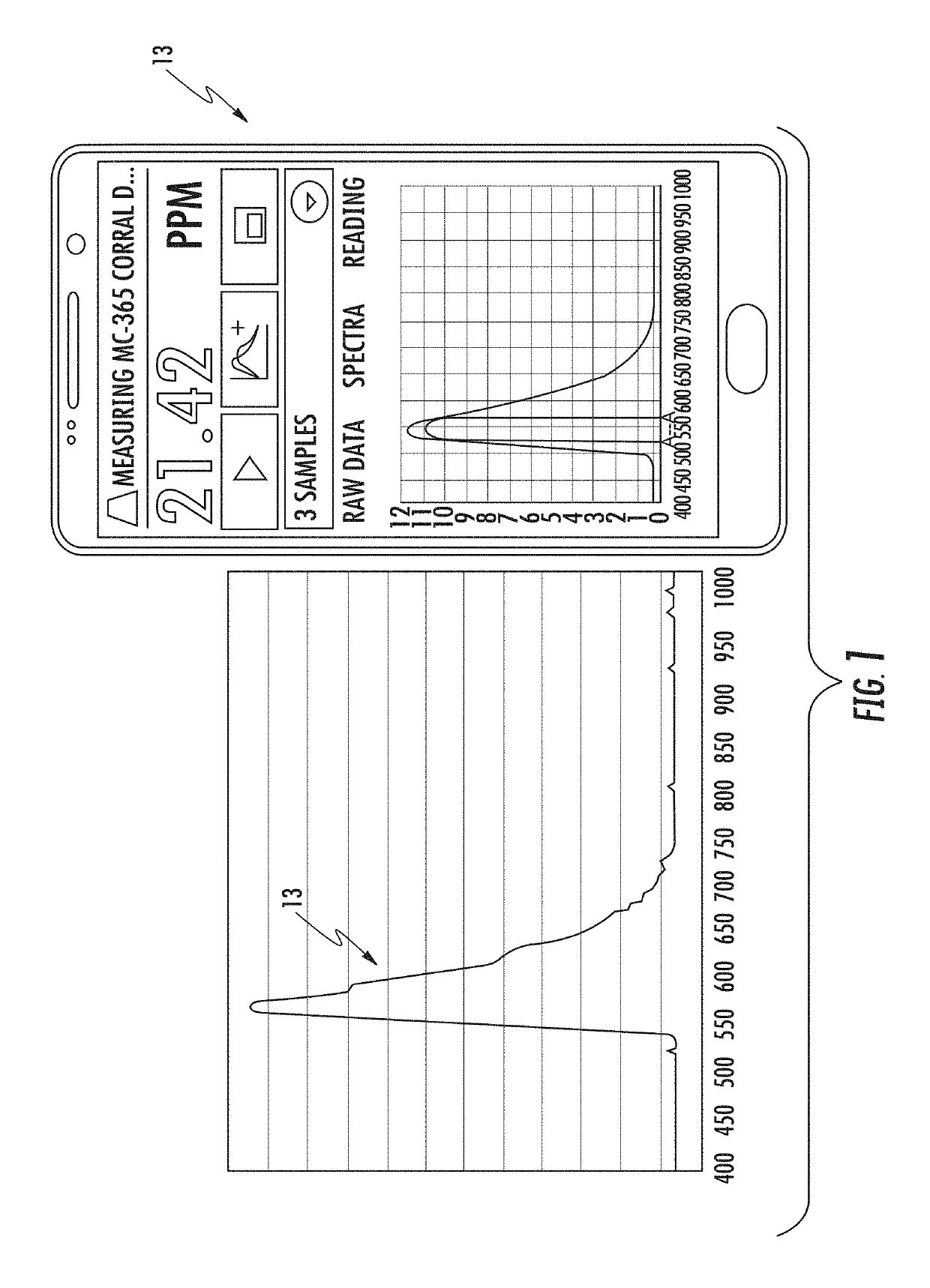Laser ablation and filtration apparatus and process for removal of hydrocarbons and contaminants
a technology of filtration apparatus and filtration process, applied in the direction of filtration treatment, specific water treatment objectives, separation processes, etc., can solve the problems of generating additional waste and expense, exhausting and needing to be continuously disposed of replaced, and removing hydrocarbons and contaminants from water, etc., to achieve the effect of environmental safety and effectiv
- Summary
- Abstract
- Description
- Claims
- Application Information
AI Technical Summary
Benefits of technology
Problems solved by technology
Method used
Image
Examples
example
[0112]The following example is illustrative and is not exhaustive. Hydrocarbons present in a liquid are measured via an ASD spectroradiomete, to absorb around 400-800 nm, with a peak fluorescence around 500-550 nm (see FIGS. 1-1A and FIGS. 2-2A). Laser radiation can be used to target the entire hydrocarbon that is known to fluoresce at these wavelengths. For example a 532 nm laser radiation is an effective wavelength because this particular wavelength passes through both fresh and salt water fairly well (FIG. 3) and is also strongly absorbed by hydrocarbons. Other wavelengths, selected based on their absorption characteristics into a particular contaminant, and the fluid can also be used. For example, wavelengths may be selected that will penetrate the liquid and will be absorbed by the hydrocarbon and cause vaporization, denaturing or separation of the hydrocarbon from the fluid. Also, in various embodiments a wavelength will be selected so the liquid absorbs some of the laser ligh...
experimental study
[0116]FIGS. 4-4A illustrate before and after results for water 20 processed and / or purified with a laser ablation process. FIG. 4A is a photograph view illustrating a sample of contaminated water 20, and then a sample of processed water 30. Contaminated water 20 had hydrocarbon levels measuring at 21.42 ppm. After going through a laser ablation and filtration process the processed water 30 had hydrocarbon levels measuring at 6.70 ppm. During the experimental study, 1064 nm 100 ns laser pulses in a prototype system were used to successfully reduce the concentration of a Gulf of Mexico offshore location for a Major Oil Company oil dispersion in water, at room temperature, by 75% by vaporizing the oil that was emulsified in the water. As shown in FIG. 4A, the water turned visibly clearer after exposure to the laser pulses, a gas was generated, and the measured parts per million of the hydrocarbon content decreased by 75%.
[0117]In various embodiments one or more different selected wavel...
PUM
| Property | Measurement | Unit |
|---|---|---|
| wavelength | aaaaa | aaaaa |
| wavelength | aaaaa | aaaaa |
| second wavelength | aaaaa | aaaaa |
Abstract
Description
Claims
Application Information
 Login to View More
Login to View More - R&D
- Intellectual Property
- Life Sciences
- Materials
- Tech Scout
- Unparalleled Data Quality
- Higher Quality Content
- 60% Fewer Hallucinations
Browse by: Latest US Patents, China's latest patents, Technical Efficacy Thesaurus, Application Domain, Technology Topic, Popular Technical Reports.
© 2025 PatSnap. All rights reserved.Legal|Privacy policy|Modern Slavery Act Transparency Statement|Sitemap|About US| Contact US: help@patsnap.com



